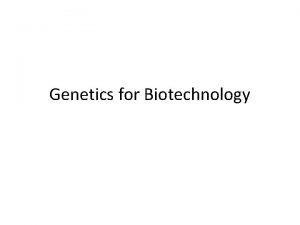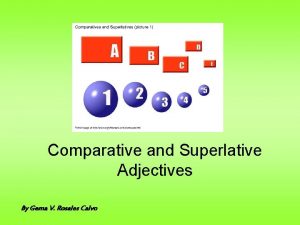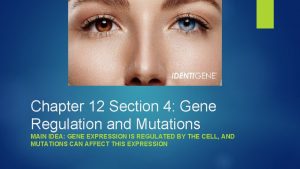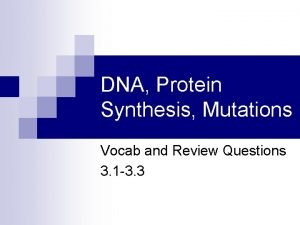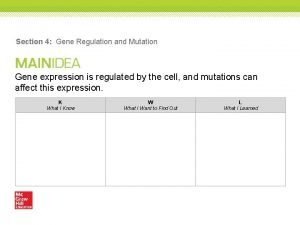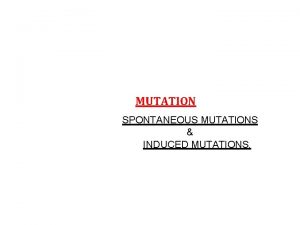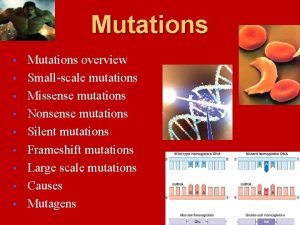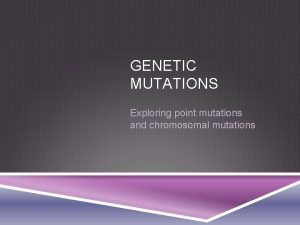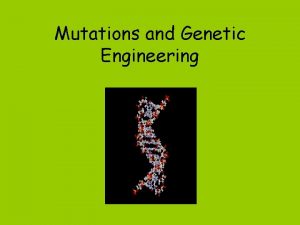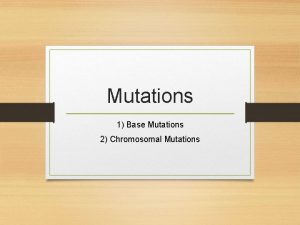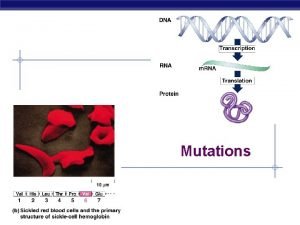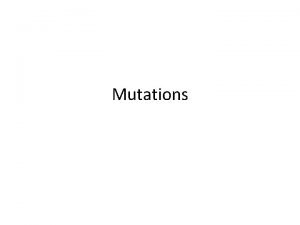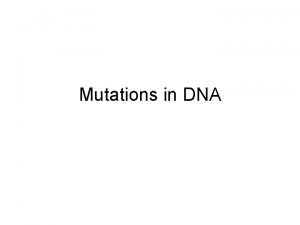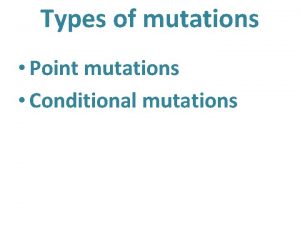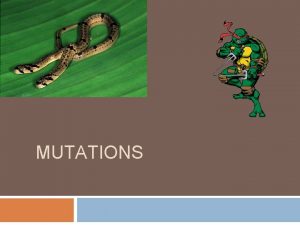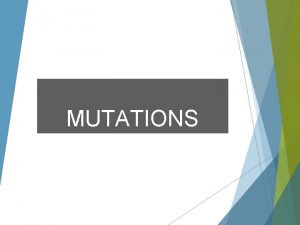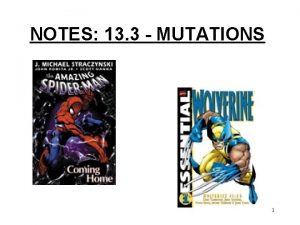Genetics Mutations quiz Which is worse and why
















- Slides: 16

Genetics

Mutations quiz Which is worse and why? 1. 2. 3. 4. Germ or somatic mutation Gene or chromosome mutation Point or frame shift Duplication or translocation 5. An error in which phase would cause nondisjunction?


Mendel studied pea plants - 7 pairs of traits: 1. Height –Tall, short 2. Seed shape – Round, wrinkled 3. Seed color – Yellow, green 4. Flower position – Axial, terminal 5. Pod color - Green, yellow 6. Flower color – Purple, white 7. Pod shape – Inflated, constricted


Mendel’s Laws of Genetics 1. Traits are controlled by factors (genes) that occur in pairs

2. Principle of dominance and recessiveness – the dominant gene will be expressed , it will cover the recessive gene T = tall (dominant) t = short (recessive) TT = tall (pure dominant) tt = short (pure recessive) Tt = tall (hybrid)

3. Law of segregation – genes are separated during the formation of gametes (homologous chromosomes are separated during meiosis, gametes are haploid) 4. Law of independent assortment – many traits are inherited independent of other traits (they are on different chromosomes)

Vocabulary: P 1 = parent generation f 1 = first generation of offspring f 2 = second generation of offspring Genotype= actual genes TT = homozygous dominant tt = homozygous recessive Tt = hybrid, heterozygous

Phenotype = appearance (tall, short, etc. ) Allele = genes for the same trait, T and t are alleles for the trait of height Punnett Square – chart used to predict the traits of offspring

Punnett square problems have 4 parts: P 1 statement Punnett square Genotype Phenotype

Ex: P 1 = Aa x Aa Dad is written first, his alleles go on the side of the Punnett square Mom is written next, her alleles go on the top of the Punnett square f 1 genotype 1 dominant 2 hybrid 1 recessive f 1 phenotype 3 axial 1 terminal

Two factor crosses - follow the same rules but you compare 2 traits at the same time Ex: P 1 = Rr. Tt x Rr. Tt • Dad is written first and on the side. • Mom is written next and on the top. • Use foil to determine the alleles: (first, outer, inner, last) RT, Rt, r. T, rt

Ex: P 1 = Rr. Tt x Rr. Tt • Follow dad’s pattern. Whichever letter is first for dad is first for the entire problem. • The first genotype word describes the first pair of alleles, the next word describes the second pair.

Ex: P 1 = Rr. Tt x Rr. Tt F 1 genotype 1 dominant, dominant 2 dominant, hybrid 2 hybrid, dominant 4 hybrid, hybrid 1 dominant, recessive 2 hybrid, recessive 1 recessive, dominant 2 recessive, hybrid 1 recessive, recessive F 1 phenotype 9 Round, Tall 3 Round, short 3 wrinkled, Tall 1 wrinkled, short

P 1 = Aa x Aa P 1 = Rr. Tt x Rr. Tt Monohybrid cross: Both parents are hybrid for one trait Dihybrid cross: Both parents are hybrid for both traits Genotype ratio = 1: 2: 1 Phenotype ratio = 3: 1 Phenotype ratio = 9: 3: 3: 1
 Mutations quiz
Mutations quiz Hey bye bye
Hey bye bye Lawrence kohlberg
Lawrence kohlberg Superlative form of young
Superlative form of young Degrees of comparison of active
Degrees of comparison of active Can fanny play violin much worse
Can fanny play violin much worse Adjectives irregular
Adjectives irregular Not better nor worse
Not better nor worse Do you think they were worse sinners
Do you think they were worse sinners Not knowing is worse than knowing
Not knowing is worse than knowing Worse than slavery political cartoon
Worse than slavery political cartoon Section 4 gene regulation and mutations
Section 4 gene regulation and mutations Protein synthesis and mutations
Protein synthesis and mutations Protein synthesis and mutations
Protein synthesis and mutations Protein synthesis and mutations
Protein synthesis and mutations Section 4 gene regulation and mutations
Section 4 gene regulation and mutations Dont ask
Dont ask
